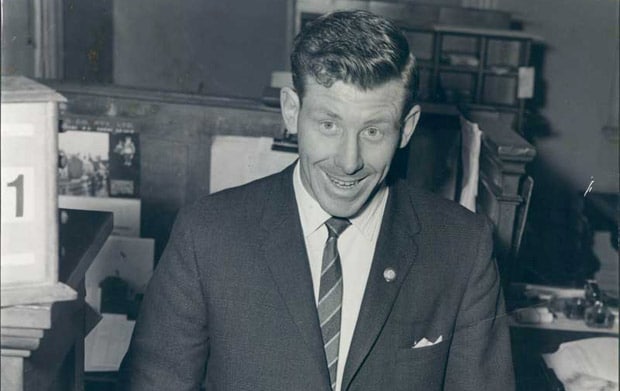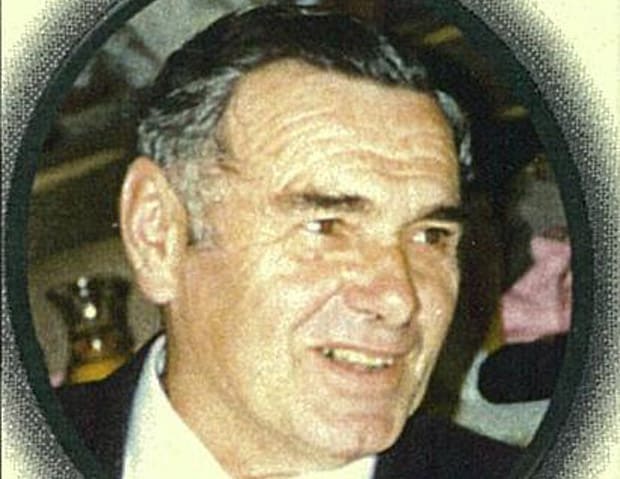Sometime in 1965, the late Ted Dumaresq came up with an idea that would have massive ramifications for the game at its most rudimentary level.
Then an aspiring student at Toorak Teachers’ College, Dumaresq resolved that children should be afforded the chance of playing football on the big stage during the half-time break of a League match.
Dumaresq, who had also taken on the role of coach of a junior team he’d established at St Matthews in North Fawkner, took his idea to Carlton because the club was central to the northern zone in which he worked.
He volunteered a group of boys from the school at which he was then teaching (Moomba Park), as did another teacher at Pascoe Vale Primary, and together they ferried the students to a coaching clinic then run by Carlton’s Noel Brady in nearby Coburg.
From there the concept materialised, as Dumaresq’s wife Pauline recently explained.
“The people at Carlton liked the idea of the children playing at half-time, but said they needed to find a sponsor,” Pauline said.
“Graham Donaldson, who had not long retired from the Carlton seniors and was coaching the seconds as I recall, also worked with the State Savings Bank (now the Commonwealth Bank) at the time and it was he who put the proposal to the bank to be a sponsor. In the end a meeting was held and all but three League teams from memory agreed to field a team. This was 1967, the year the State Bank Little League started.”

Former Blue Graham Donaldson at the State Savings Bank. (Photo: Carlton Football Club)
Dumaresq, who cut his footballing teeth at Sandhurst in the Bendigo Football League as both player and coach, was suddenly thrust into the role of manager, selector and coach of Carlton’s team of Little Leaguers, on top of his duties as the club’s resident senior statistician.
And the rest, as they say, is football history.
“Ted rang three schools during the week and arranged for the sports teacher to select a handful of Grade 6 children to take part,” Pauline said.
“He arranged for transport if the parents were willing and he always transported a car load himself. He’d bring home the guernseys each week so that they’d be cleaned for the following game. There was very little cost.”
The first matches of the opening round of the SSB Little League were staged on May 13, 1967. Nine clubs each fielded a team (Collingwood, Hawthorn and South Melbourne joined later), with boys under the age of 11 on January 1 of each season eligible to play. The 88-game Carlton senior player Alan Mangels, whose father captained Carlton’s Under 19 Premiership team, was named the Blues’ inaugural Little League captain.
Pauline remembered that the kids, amongst them the likes of Steven Smith, Geoff Raines and Ted Whitten jnr, would take to the vast expanses of the old suburban venues like Princes Park and chase the leather up and down the entire length of the playing field.
This, she said, was her late husband’s gift to the great Australian game.
Ted Dumaresq, whose surname is pronounced ‘jewmarreck’, boasted family ties with the Dumaresqs of Normandy in the days of William the Conqueror. The first Dumaresqs on Australian shores were the three brothers William, Henry and Edward, and sister Elizabeth Dumaresq - the wife of the seventh Governor of New South Wales, General Sir Ralph Darling – who arrived in 1825.
Edward, to whom Ted was directly descended, was appointed Surveyor General of Van Diemen’s Land by Governor Arthur, and later accepted duties as Police Magistrate at New Norfolk. Edward died in Longford at the age of 103 in 1906, and the Dumaresqs still frequent the house he had built there in the 1840s.
Carlton’s very own Edward Joseph Dumaresq, who was born in Kilmore in 1936, dedicated his entire professional life to teaching.
“Ted was a very enthusiastic and inspiring teacher and later principal of primary schools,” said Pauline, who first met her future husband in 1955.
“Kids and sport were everything to Ted, because he realised not all kids excelled academically. That’s where he encouraged kids, whether it was football, cricket or whatever else. Saturday was his football day, and in hearing people at the football swear he’d say ‘Oh well, they do have to get work out of their system – this is a chance for people to unwind’.
“A lot of people get rowdy at the football, but he was never one of them. That’s why he did the stats.”
Dumaresq’s love for Carlton knew no bounds. As Principal of Glenroy North Primary back in ’79, he once famously walked into the school grounds wielding the No.37 guernsey of the premiership hero Wayne Harmes.

The late Ted Dumaresq. (Photo: Supplied)
For his services to Carlton both as statistician and of course convenor of its Little League team, Dumaresq was awarded honorary Life Membership of the club in 1990 - the same year in which Premiership players Justin Madden and Shane Robertson were similarly recognised.
To the end, when he finally succumbed to Parkinson’s Disease after a brave four-year battle, Dumaresq continued to support his beloved Blues. He died on August 3 this year and at his funeral a card handed to mourners carried the following inscription;
Not how did he die, but how did he live?
Not what did he gain but what did he give?
These are things that measure the goodness of a man.
Dumaresq had outlived the Little League by some years. Sadly, the competition he had advocated in the noble interests of participation had fallen foul of the blind pursuit of winning, with only the more capable young footballers earning regular selection.
Today, Auskick is the norm, and while Pauline knows it’s not Little League, she cannot help but sense a spiritual link between the old game and her dearly departed.
“When I go to the footy now and I sit there at half-time I nearly get tears seeing all those kids,” Pauline said.
“So many children enjoy the thrill of playing at the half-time interval of a League football game . . . and all this came about because of an idea that was put into action.”


